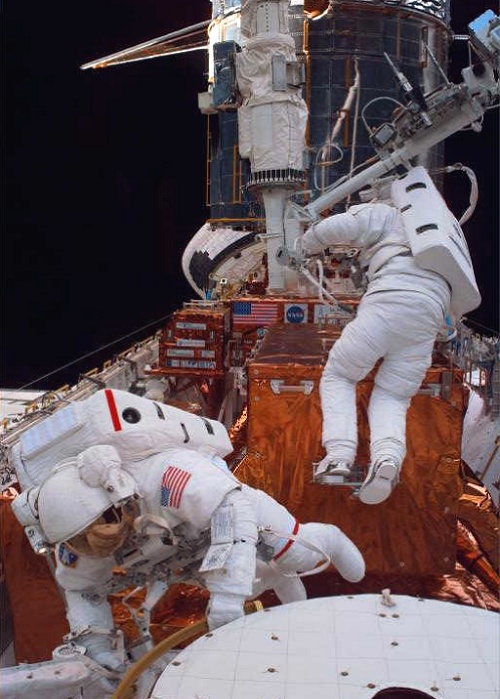One of four science instruments aboard NASA’s Hubble Space Telescope went into “suspended mode” last Tuesday. The instrument, called the Space Telescope Imaging Spectrograph (STIS), has developed a problem with its only remaining power unit. In 2001, a similar malfunction rendered the primary power unit inoperable.
On Tuesday, August 3, the 5-volt backup power supply appears to have failed. STIS automatically put itself into a suspend state, shutting off some of its components and blocking any planned observations. By Friday afternoon, ground controllers commanded the instrument to “safe” mode, which removes all input power from internal components and eliminates any risk of damage, such as wires fusing together.
Engineers now are investigating the cause of the problem and trying to determine if the instrument can be recovered. STIS was not taking observations at the time the problem occurred, so the light path was blocked to prevent damaging its sensitive detectors. But the component that may have failed powers all the mechanisms in STIS, including its shutter, and without it, the instrument likely will remain out of commission.
The failure occurs at a time when the space agency is reviewing proposals for a robotic repair mission. NASA Administrator Sean O’Keefe initially canceled a planned final Hubble servicing mission using the space shuttle, but bowed to scientific, political, and public pressure to find some way of keeping the ailing telescope in service. Time is of the essence, as engineers believe Hubble’s batteries or gyros will fail by 2008.
STIS, however, was not slated for replacement or upgrade as part of any future servicing mission. Designed to operate for 5 years, STIS was installed during the second Hubble servicing mission in 1997 and, say scientists, has either met or exceeded all of its goals. The instrument’s high sensitivity and fine spatial resolution enabled astronomers to search for massive black holes and study star formation, planets, nebulae, galaxies, and other objects in great detail. Among its accomplishments is the first-ever measurement of an extrasolar planet’s atmospheric composition and independent confirmation of the age of the universe by finding the coolest — and hence oldest — white dwarf stars in our galaxy.
Hubble’s other instruments — the Near Infrared Camera and Multi-Object Spectrometer (NICMOS), the Advanced Camera for Surveys, and the Wide Field/Planetary Camera 2 — are operating normally. STIS observations account for about 30 percent of all Hubble scientific programs in the current observing cycle. For the next few weeks, observing time now made available by the loss of STIS has been given to other peer-reviewed programs that require use of other science instruments on Hubble. This will continue on a weekly basis until engineers decide whether or not STIS can be recovered.










